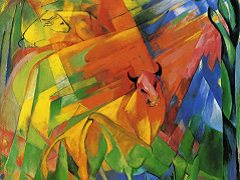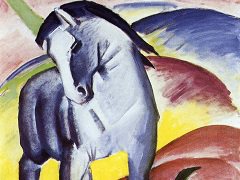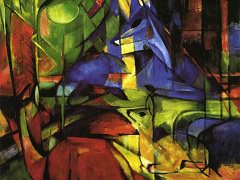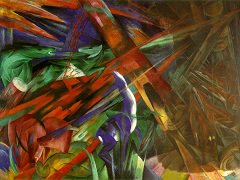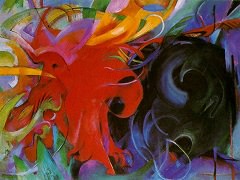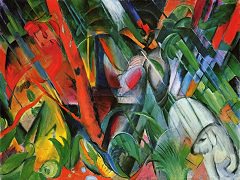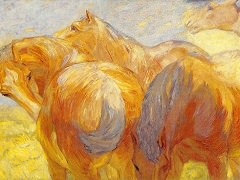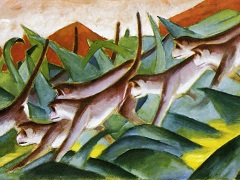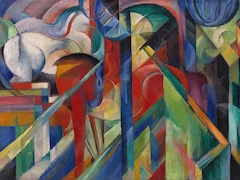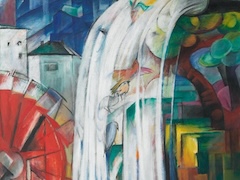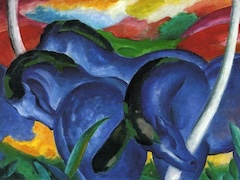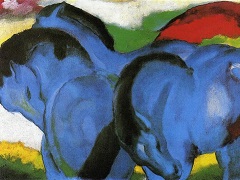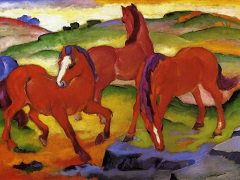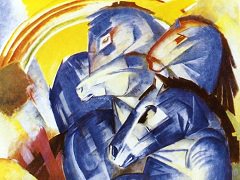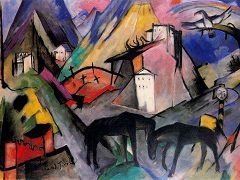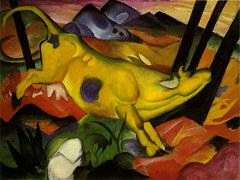Little Yellow Horses by Franz Marc
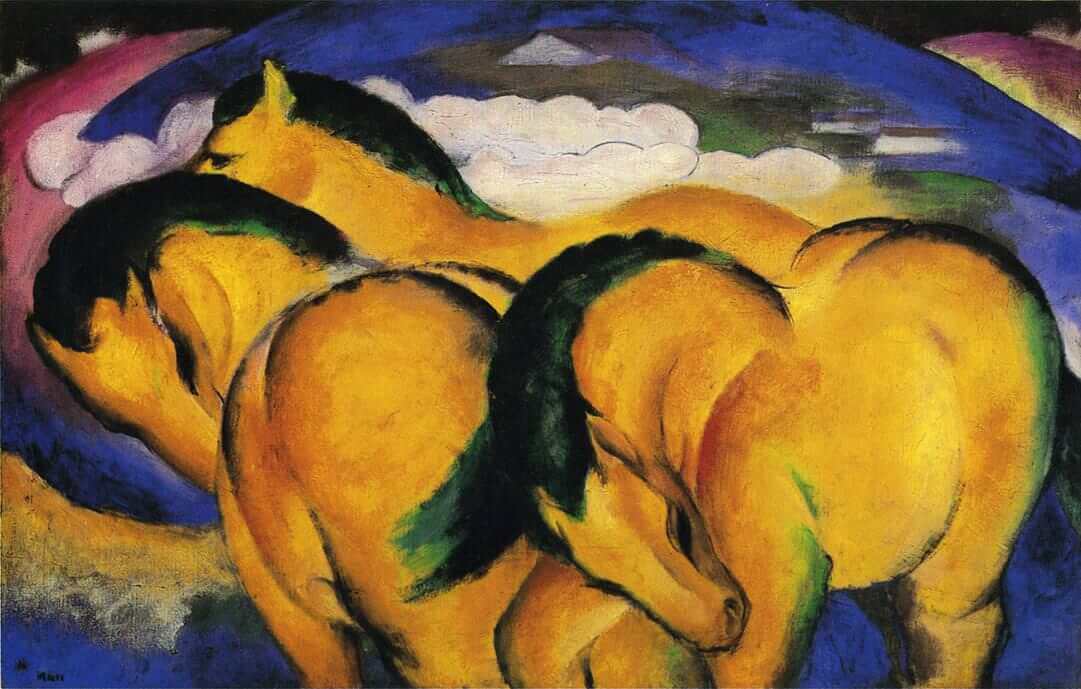
In relation to the quasi-religious aspect of Marc's depictions of animals, a comparison may be drawn between his paintings of animals and Byzantine and early Renaissance icons of saints or religious people. Apart from their decorative quality, such icons had the function of aiding prayer and veneration. They are characterised by stylised images, passive figures, centralised compositions, and plain backgrounds and hence the identification of similarities between Marc's paintings of animals and religious icons cannot be avoided. Furthermore, religious icons often included areas covered in gold leaf, which would have reflected light when placed next to candles as was common. Marc's palette is overall very warm with a sense of luminosity frequently being applied to the main subject matter of a painting. Little Yellow Horses is a good example of this treatment of colour with the horses depicted in a warm, golden yellow which creates the effect of shining out from the canvas. In this sense they may be compared to the areas of gold leaf on paintings of religious icons.
Marc may have been introduced to Byzantine icons by his brother Paul, a Byzantine scholar who was studying in Florence, and so may have known of early Renaissance icons. In 1901 the brothers visited the Italian cities of Padua, Verona, and Florence; then, in April 1906, Marc visited his brother in Mount Athos, Greece. Taking into consideration Marc's religious beliefs, the appeal of early Renaissance and Byzantine icons is palpable, and there is a strong possibility that he was influenced by such images while visiting Italy and Greece.
Drawing on the way in which religious icons are meant as an aid for the worshipper in prayer, and an encouragement to contemplate the life of the saint or the biblical figure depicted, Marc invites the viewer to connect with the animals in his paintings and to contemplate the spiritual beauty that he strove to depict. His paintings are, more often than not, devoid of humans as though it is an animal-only world. When viewing it, humans are allowed to become a part of the work, since the viewpoint is often at the level of the animal. The viewer is given the chance to get closer to the animals in his paintings and experience their beauty. Marc's compositions, especially before the influence of Orphism and Futurism, are often formed by a sculptural mass of animals at the centre of the picture plane, with curved lines dominating in order to underline the sense of harmony, peace, and balance.

